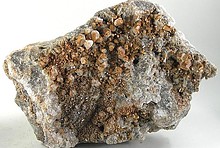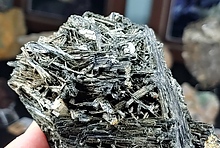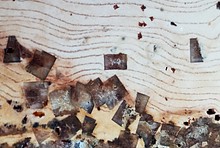Home PageAbout MindatThe Mindat ManualHistory of MindatCopyright StatusWho We AreContact UsAdvertise on Mindat
Donate to MindatCorporate SponsorshipSponsor a PageSponsored PagesMindat AdvertisersAdvertise on Mindat
Learning CenterWhat is a mineral?The most common minerals on earthInformation for EducatorsMindat ArticlesThe ElementsThe Rock H. Currier Digital LibraryGeologic Time
Minerals by PropertiesMinerals by ChemistryAdvanced Locality SearchRandom MineralRandom LocalitySearch by minIDLocalities Near MeSearch ArticlesSearch GlossaryMore Search Options
The Mindat ManualAdd a New PhotoRate PhotosLocality Edit ReportCoordinate Completion ReportAdd Glossary Item
Mining CompaniesStatisticsUsersMineral MuseumsClubs & OrganizationsMineral Shows & EventsThe Mindat DirectoryDevice SettingsThe Mineral Quiz
Photo SearchPhoto GalleriesSearch by ColorNew Photos TodayNew Photos YesterdayMembers' Photo GalleriesPast Photo of the Day GalleryPhotography
╳Discussions
💬 Home🔎 Search📅 LatestGroups
EducationOpen discussion area.Fakes & FraudsOpen discussion area.Field CollectingOpen discussion area.FossilsOpen discussion area.Gems and GemologyOpen discussion area.GeneralOpen discussion area.How to ContributeOpen discussion area.Identity HelpOpen discussion area.Improving Mindat.orgOpen discussion area.LocalitiesOpen discussion area.Lost and Stolen SpecimensOpen discussion area.MarketplaceOpen discussion area.MeteoritesOpen discussion area.Mindat ProductsOpen discussion area.Mineral ExchangesOpen discussion area.Mineral PhotographyOpen discussion area.Mineral ShowsOpen discussion area.Mineralogical ClassificationOpen discussion area.Mineralogy CourseOpen discussion area.MineralsOpen discussion area.Minerals and MuseumsOpen discussion area.PhotosOpen discussion area.Techniques for CollectorsOpen discussion area.The Rock H. Currier Digital LibraryOpen discussion area.UV MineralsOpen discussion area.Recent Images in Discussions
Techniques for Collectorscleaning Smithsonite from Greece?

9th Aug 2012 08:39 UTCJonathan Ertman
do i get it off,ultrasonic,acid,high pressuare water gun?thanks

9th Aug 2012 10:05 UTCLefteris Rantos Expert
If the orange stain you mention looks like this http://www.mindat.org/photo-390254.html http://www.mindat.org/photo-338678.html http://www.mindat.org/photo-347868.html then it is caused by a thin layer of iron oxides. It will be difficult to remove it without ruining the silky luster of the Smithsonite (don't try any acids!). Also, it is very probable that it's not just a surface stain, but penetrates within the Smithsonite, in which case you can not remove it. Still, I would strongly suggest NOT to remove it...i certainly wouldn't, this is a beautiful and distinctive form of Smithsonite from Lavrion.
If it looks like this http://www.mindat.org/photo-347872.html then you have a rare "cadmium smithsonite", with the yellow color caused by minute Greenockite inclusions. This, of course, can't be removed. And why would you try to remove it, it's a rare and desirable habit!
Lefteris.

9th Aug 2012 10:14 UTCJonathan Ertman
weighs 1148 grams,it is old timer i got label from paris from 1890 or early,i may put
back in ultrasonic the mineral is 5inchs by 4 by 2 thanks Jon.
9th Aug 2012 13:13 UTCRock Currier Expert
Can you supply an image of the specimen?
The first step it to look at the orange stain under a microscope or magnification and probe at it with a needle and to determine if it is on the surface of the smithsonite on actually included in the smithsonite. It it is the latter, there is not much you can do about it. If it is just on the surface and is an "iron" stain you can probably remove it with a Waller solution. Its use in cleaning quartz is described in the article on cleaning quartz http://www.mindat.org/article.php/403/Cleaning+Quartz.
9th Aug 2012 18:03 UTCSteve Hardinger 🌟 Expert

9th Aug 2012 19:55 UTCLefteris Rantos Expert
Lefteris.

10th Aug 2012 09:56 UTCJonathan Ertman




Mindat.org is an outreach project of the Hudson Institute of Mineralogy, a 501(c)(3) not-for-profit organization.
Copyright © mindat.org and the Hudson Institute of Mineralogy 1993-2024, except where stated. Most political location boundaries are © OpenStreetMap contributors. Mindat.org relies on the contributions of thousands of members and supporters. Founded in 2000 by Jolyon Ralph.
Privacy Policy - Terms & Conditions - Contact Us / DMCA issues - Report a bug/vulnerability Current server date and time: April 16, 2024 05:03:36
Copyright © mindat.org and the Hudson Institute of Mineralogy 1993-2024, except where stated. Most political location boundaries are © OpenStreetMap contributors. Mindat.org relies on the contributions of thousands of members and supporters. Founded in 2000 by Jolyon Ralph.
Privacy Policy - Terms & Conditions - Contact Us / DMCA issues - Report a bug/vulnerability Current server date and time: April 16, 2024 05:03:36











